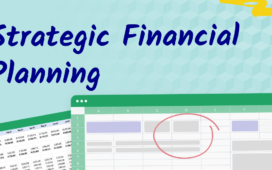Paying quarterly taxes can feel overwhelming, but staying on track is possible. You might think of it as navigating through a maze. The path might twist and turn, but reaching the end is achievable if you follow the right steps. It’s crucial to manage your quarterly tax payments to avoid penalties and financial stress. You must plan, calculate, and pay on time. A tax and accounting specialist in Gilbert, AZ, can provide you with the guidance you need. Their expertise will help you understand your obligations more clearly. Prioritizing your tax payments helps you maintain financial stability. It’s important to know what needs to be paid and when. By taking control of this process, you empower yourself with financial security. This guide will walk you through the essentials of quarterly taxes. You will learn how to keep your payments on track, ensuring peace of mind each quarter.
What Are Quarterly Taxes?
Quarterly taxes are payments you make to the IRS four times a year. These payments are based on your estimated annual income. They apply to self-employed individuals, freelancers, and business owners who do not have taxes withheld from regular paychecks. You pay these taxes in April, June, September, and January. Understanding this schedule is vital to avoid any surprises.
Why Are Quarterly Taxes Important?
Quarterly taxes help you manage your tax liabilities throughout the year. This process prevents your tax bill from becoming overwhelming at year’s end. It also reduces the risk of penalties from underpayment. Additionally, regular payments keep your financial planning more accurate and reliable.
How to Calculate Quarterly Taxes
Calculating quarterly taxes involves estimating your annual income and the taxes owed on that income. The IRS provides a useful tool, IRS Direct Pay, to help you determine these amounts. You need to consider your previous year’s tax return, business profits, and any other income sources. By dividing your estimated total tax by four, you will know your quarterly payment amount.
Quarterly Tax Payment Schedule
Pay attention to the quarterly tax payment schedule. Missing a payment can lead to penalties. Here’s a simple table to help you remember:
| Payment Period | Due Date |
|---|---|
| January 1 – March 31 | April 15 |
| April 1 – May 31 | June 15 |
| June 1 – August 31 | September 15 |
| September 1 – December 31 | January 15 (following year) |
Avoiding Penalties
To avoid penalties, ensure you pay at least 90% of your current year’s tax or 100% of the previous year’s tax, whichever is smaller. This guideline helps you avoid underpayment issues. If your income fluctuates significantly, adjust your payments accordingly.
Using Technology and Resources
Technology can be your ally. Use accounting software to track your income and expenses. This information is crucial for accurate tax estimation. Websites like the IRS provide valuable resources and calculators. These tools simplify the process of managing your quarterly taxes.
When to Seek Professional Help
Professional help might be beneficial if your tax situation is complex. Tax professionals can offer tailored advice to fit your needs. Consulting with an expert ensures compliance and accuracy. They can identify deductions and credits you might overlook. This guidance can be a valuable investment in your financial health.
Final Thoughts
Managing quarterly taxes responsibly is essential for financial stability. By following the right steps and utilizing available resources, you can navigate this process smoothly. Plan ahead, keep records, and refer to the provided schedule. With preparation, you ensure peace of mind and focus more on growing your income.







